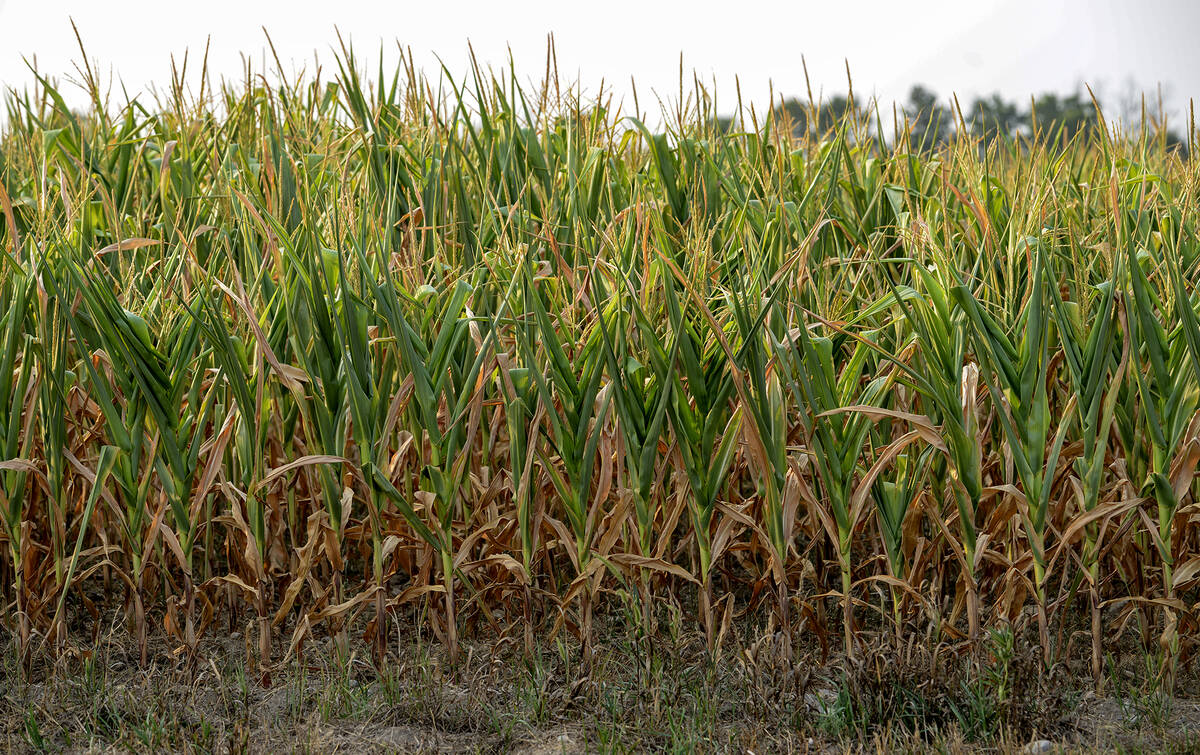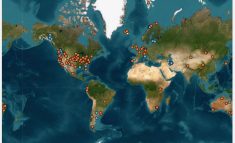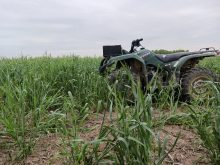An early chipper variety stirred interest at the recent potato field trials in Elora by offering earlier maturity than standard varieties with similar yields.
Five companies, including one in the United States, are evaluating the potential of F160032-06 this season.
Why it matters: Potato trials determine optimum growing practices for new varieties, highlighting their strengths and exposing potential challenges.
Read Also

Extreme variability marks Ontario’s 2025 corn crop
The yield potential of Ontario’s 2025 corn crop was lost in some areas due to extreme dry conditions.
Vanessa Currie, a research technician with the University of Guelph’s plant agriculture department, said several of the elite selections chosen for federal potato breeding program field trials are either released or close to being released, including F160032-06.
“One of the things we do look for (in trials) is tolerance to disease,” said Currie at the potato research open house in Elora Aug. 21. “We’re looking for varieties which can be grown sustainably with as low inputs as possible.”
Drought tolerance tests were difficult due to rain this season, but Currie said the Simcoe research station is running successful low-input pressure trials.
“It’s two degree zones different than here. So, it tends to be hotter, drier, and the soil temperatures are hotter. That’s why we wanted to put our low input trial there, to evaluate it under more stress.”
She won’t have information until after harvest when data has been aggregated.
Peter Vander Zaag, Sunrise Potato Systems Institute president, said the F160032-06 variety has high dry matter and high yield potential, which is a plus for early harvest. It is also resistant to PVX (potato virus X, a plant pathogenic virus) and has moderate common scab resistance.
“The growers who are trying it out are saying, yeah, it looks pretty good,” he said. “How well will it store? The next question is how well it will process during storage.”
Vander Zaag said success in small trials can be deceiving, but plots of 50 acres or more allow better evaluation of a potato’s performance.
“I have real reason to believe this is going to be a winner,” he said.
Vander Zaag’s dreams of hitting the chipping big leagues with Sunrise Potato’s SP327 variety are coming to fruition. It is commercially grown in Alberta, Manitoba, Quebec and Ontario and has trialled throughout the United States. He is also negotiating a purchase deal with China.
“Old Dutch, the company based in Manitoba and the States, loves this variety. They’ve used it almost exclusively for the whole season,” Vander Zaag said. “It’s made the breakthrough, but that’s not easy.”
He said SP327’s low and stable winter storage glucose levels, fry tests, colour and shape consistency, regardless of where it’s grown, are keys to its success.
For example, Lamoka is a niche Ontario variety with no uptake elsewhere. Despite being a low yielder, growers love its fry consistency, low sugars and white chips into June and July.
“Most potatoes start to get risky at that time, and that’s why we grow it – that June-July window, which makes Ontario self-sufficient in potato production for chips.”
Depending on the climate where it’s grown, SP327 can range from early to late, making it a June potato in Ontario but a late July variety in Manitoba. It still fries well at the end of July because of the slightly cooler climate.
While not late blight resistant, SP327 is resilient to it and other viruses and doesn’t rot in storage. In Vander Zaag’s opinion, nothing on the market is comparable. His next challenge is ramping up seed production to meet demand.
Saskatchewan and Ontario seed production is on track, but the larger Quebec market is lagging.
“This year, we produce 280 pounds of nuclear mini-tubers; 180 pounds are planted here in Ontario and 100 pounds … in Saskatchewan.”
If Alberta wanted to grow 640 acres of SP327 next year, the seed capacity wouldn’t exist, and individual growers wouldn’t have enough seed. The evolution from nuclear mini-tubers to commercial seed production could take another two years.
“This is our battle,” Vander Zaag said. “You can’t provide it, and then they get turned off and go in another direction.”













